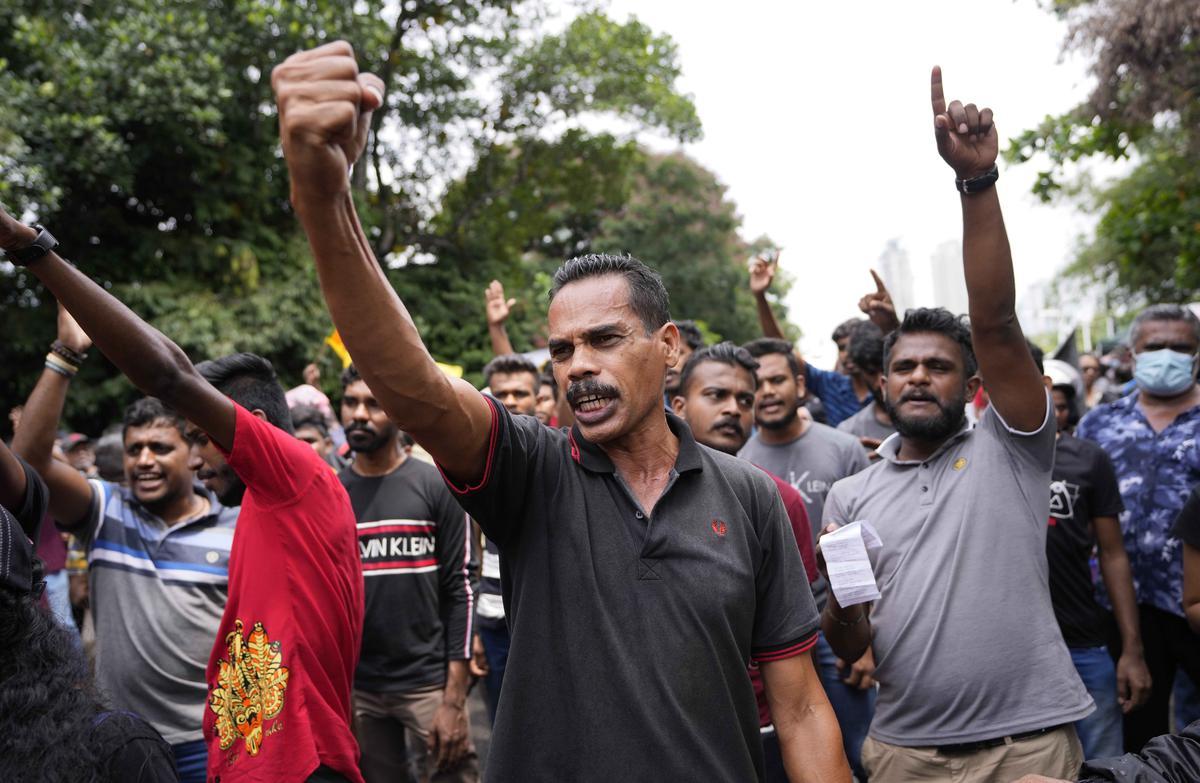Several hundred people gathered outside Sri Lanka’s Parliament late Thursday night, hours after police tear-gased students who marched to the spot as part of ongoing citizens’ protests against the ruling Rajapaksas.
Their agitations continued all day on Friday, braving fresh rounds of water cannons and tear gas unleashed by police, as the Parliament convened.
Meanwhile, nearly 2,000 worker unions from the public and private sector joined a massive Hartal on Friday, in one of the largest strike actions in Sri Lanka in recent history. Train and bus transport came to a virtual standstill across the island, with only private vehicle seen on the road. Employees at most commercial establishments, including banks, did not report to work.
The demonstrators chanted anti-government slogans outside the Parliament complex, in the latest escalation of agitations demanding that President Gotabaya Rajapaksa and Prime Minister Mahinda Rajapaksa resign, taking responsibility for the economic meltdown in the island.
For months now, citizens have been holding street protests in different parts of the country, as they battle acute shortages of essentials and long power cuts. On April 9, the protests intensified as thousands culminated at Colombo’s seafront, near the Presidential Secretariat, asking the Rajapaksas to quit immediately. The seaside protests have persisted for nearly a month now, with several protesters camping adjacent to the country’s most powerful office. More recently, demonstrators set up tents outside the Prime Minister’s official residence, and now, the agitations have spread to the road leading to the Parliament, where police have placed iron barricades to prevent protesters from entering the premises. Parliament sittings have been postponed to May 17, despite objections raised by Opposition parties.
On Thursday night, the crowd continued to swell well past midnight, as families, including children, arrived in the area, in a show of support to the protesting youth. Most waited for hours, listening to student leaders, activists and trade unionists slamming the government for its “arrogance” and “failure”. A live band played music, mostly songs of resistance, on a temporary stage erected on top of the road.
Convenor of the Inter-University Student’s Federation Wasantha Mudalige said the government is “strangling people’s necks” as there is “no food, no fuel, nothing!”. “In such a situation, university students must speak up. Police tear-gased us, but we will continue agitating here, to tell Parliament that its members are not representing us, or our concerns,” he told The Hindu.
Civil activist Gamini Viyangoda described the protest as “a very important step forward”. Observing that society now has “many new avenues” to express themselves, he said “rulers have not understood” that, and think in the “same old methods”. He was referring to the Parliament electing a Deputy Speaker on Thursday.
The Rajapaksas’ ruling party, along with its former allies who claim to be independent now, voted together for the former Deputy Speaker, who had recently resigned, effectively re-electing him. They cast 148 votes in total, while the opposition managed to garner less than half the number in the 225-member House. The move exposed both, the firm loyalty of apparent deserters to their former political bosses, and the Opposition’s weakness in the legislature, where it hopes to move trust votes against the government and President.
Scores of people are protesting continuously for nearly a month at Galle Face Green, near the sea-facing Presidential Secretariat in #SriLanka . | #SriLankaCrisis#SriLankaProtests
Video and Text: @Meerasrini pic.twitter.com/VbjVkUGIFf
— The Hindu (@the_hindu) May 6, 2022
Source:The Hindu


